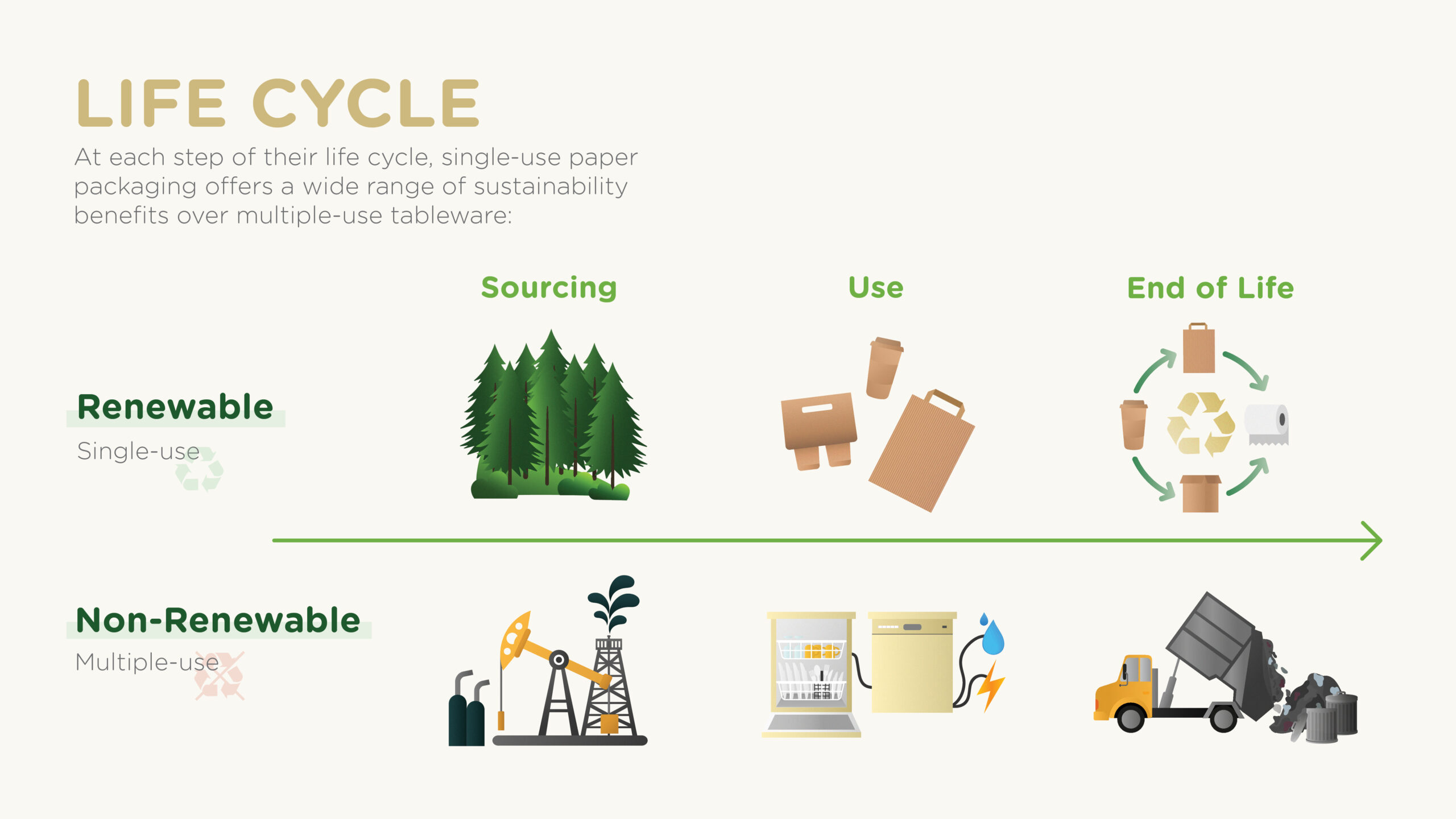Updated data for the study from September 2021 clearly reconfirms the benefits of single-use paper-based packaging compared to multi-use systems.
EPPA and its members are committed to the objectives of the European Green Deal and support science-based EU policies. At a time in which the European Union is working to make its economy truly circular, it is essential to rely on evidence-based solutions.
That is why EPPA asked Ramboll, independent Danish consultants to the European Commission, to carry out a Life Cycle Assessment (LCA) study to obtain a comprehensive picture of the overall environmental performance of food and drink containers used in European quick-service restaurants throughout the whole life cycle of these items. The study was also independently assessed by Germany’s TÜV (Technischer Überwachungsverein) and meets ISO standards.
The LCA study by Ramboll relies on primary data from the paper, packaging and foodservice industries to compare the overall environmental performance of both disposable and reusable food and drink containers used in a quick-service restaurant for in-store consumption.
Comparing the overall impacts on the environment of an item means accounting for all the factors involved in its life cycle. While it may at first seem intuitive that multi-use systems have a lower environmental impact, as these items can be used more than once, it is also easy to forget about some important factors that can result in larger negative environmental impacts – above all the impact coming from washing and drying these items.
Accounting for the energy consumption involved in the use phase of reusable plastic and traditional crockery, during in-store or out-sourced washing and drying, the Ramboll LCA study shows that the environmental impact of these multi-use systems significantly outweigh the impact of single-use paper food packaging.
Using substantially less energy throughout their lifecycle, single-use systems result in “very significant” environmental advantages in 6 out of 9 of the relevant environmental categories. The updated report reveals that reusable tableware generates 2.8 times more CO2-equivalent emissions than the paper-based single-use system, consumes 3.4 times more freshwater, produces 2.2 times more fine particulate matter, increases fossil and metal resource depletion by 3.4 times, and increases terrestrial acidification by 1.7 times.
In the greater perspective, if the studied multi-use system was introduced across Europe, its environmental impact would be equivalent to adding an annual extra 1 million petrol cars on Europe’s roads and would equal the freshwater needs of a city of 750,000 people. Considering that water stress and scarcity is an increasingly frequent phenomenon in Europe and that carbon emissions must be dramatically reduced, the urgency of choosing the more environmentally friendly option is clear.
Single-use paper-based food packaging further differentiates itself at the end of its life cycle. Contrary to polypropylene or traditional glass, metal and ceramic multi-use systems, single-use paper-based items are fully recyclable. Recycling these items is key, since the relative advantages of single-use packaging increase substantially as the recycling rate in restaurants increase from the 30% baseline of the Ramboll study. In freshwater usage alone, increasing the recycling rate of the paper-based items to 70% raises the advantage of the paper items from 3.4 to 228 times better.










